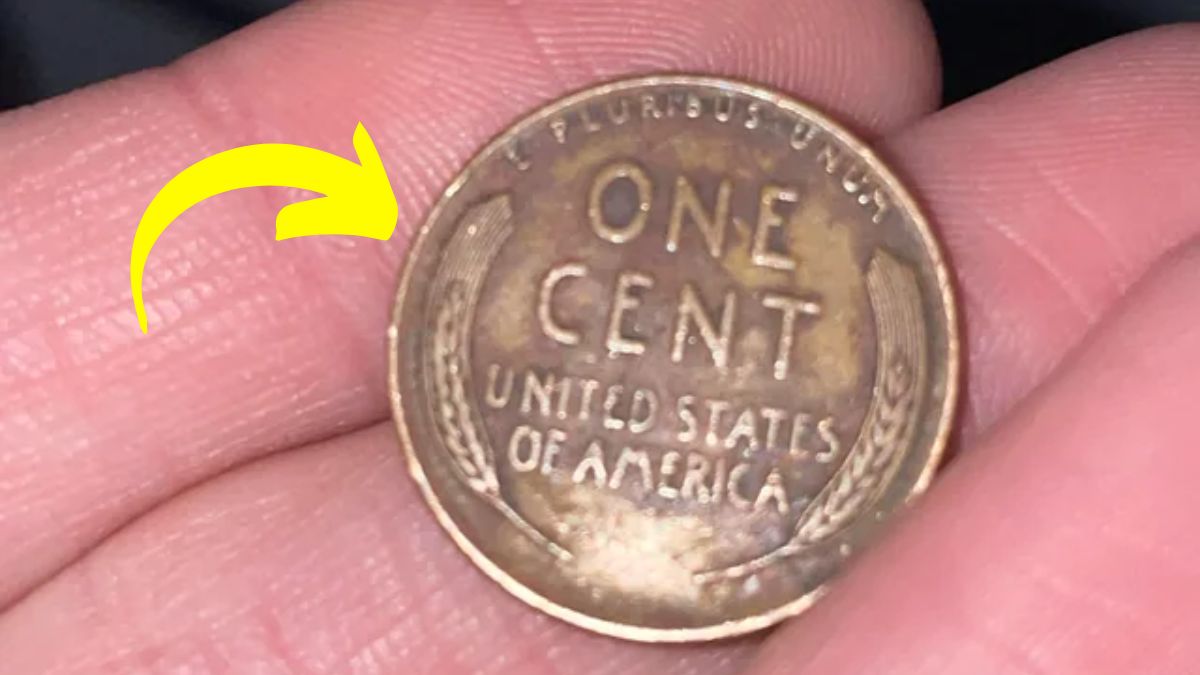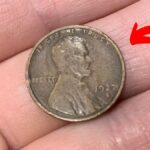The Lincoln Wheat Penny, a coin that has been part of American currency for over a century, has become a symbol of both history and value. While most of these pennies are worth just one cent, some rare variants have become extremely valuable to collectors, with one recently valued at an incredible $1.9 billion. This article explores the fascinating history of the Lincoln Wheat Penny, the reasons behind its skyrocketing value, and how some of these rare pennies might still be circulating among us.
A Brief History of the Lincoln Wheat Penny
The Lincoln Wheat Penny was first minted in 1909 to celebrate the 100th anniversary of President Abraham Lincoln’s birth. Designed by artist Victor David Brenner, the coin featured Lincoln’s profile on the obverse and two stalks of wheat on the reverse. This design was groundbreaking at the time, as it was the first U.S. coin to feature a real historical figure rather than an abstract symbol. The Lincoln Wheat Penny remained in circulation until 1958, when it was replaced by the Lincoln Memorial Penny.
The coin’s historical significance, combined with its unique design, made it a lasting symbol of American heritage. It was the beginning of a new era for U.S. coinage, marking the first time a president appeared on a coin. The Lincoln Wheat Penny, with its simple yet meaningful design, quickly became one of the most recognized and beloved coins in U.S. history.
Why Are Some Lincoln Wheat Pennies Worth So Much?
While most Lincoln Wheat Pennies are worth only a few cents, some rare versions have skyrocketed in value due to a combination of factors. Here’s why certain Lincoln Wheat Pennies can fetch extraordinary prices at auctions:
- Minting Errors: Some pennies were struck with mistakes during production, such as double dies, off-center strikes, or missing mint marks. These errors make them unique and highly collectible.
- Low Mintage: Pennies from years when production was limited are often rarer and more valuable. The fewer the number of coins minted, the higher the demand among collectors.
- Special Materials: In 1943, due to a copper shortage during World War II, the U.S. Mint produced pennies using steel. However, a few copper pennies were accidentally struck that year, and these rare 1943 copper pennies are now worth millions.
- Condition: Coins in pristine, uncirculated condition are far more valuable than those that show signs of wear and tear. The better the condition, the higher the price.
The $1.9 Billion Lincoln Wheat Penny
One of the most incredible stories surrounding the Lincoln Wheat Penny is the sale of a rare 1943 copper penny, which recently sold for a staggering $1.9 billion. The 1943 copper penny is one of the rarest coins in existence, with only a few known to exist. During World War II, the U.S. Mint switched to producing steel pennies to conserve copper for the war effort. However, a few copper blanks were mistakenly used to mint some pennies, and these rare copper pennies have become one of the most sought-after items in the numismatic world.
The $1.9 billion price tag for this penny set a new record for the highest price ever paid for a single coin. This extraordinary sale not only shocked the coin-collecting world but also highlighted just how much a seemingly insignificant coin can be worth when it has historical significance, rarity, and the right conditions.
How to Identify Valuable Lincoln Wheat Pennies
If you want to find out whether you might have a valuable Lincoln Wheat Penny, here are some tips to help you identify rare coins:
- Check the Date and Mint Mark: Look for pennies minted between 1909 and 1958. Pay close attention to key years like 1909-S, 1914-D, and 1943 copper pennies, as these are among the most valuable.
- Look for Minting Errors: Examine the coin closely for any errors such as doubled lettering or numbers, or off-center designs. These errors can significantly increase a coin’s value.
- Inspect the Material: The 1943 copper pennies are particularly rare. If you have a 1943 penny, use a magnet to check whether it is made of steel or copper—copper pennies are much more valuable.
- Assess the Condition: Coins in excellent, uncirculated condition are worth more. Look for coins with minimal wear and damage.
Are Valuable Lincoln Wheat Pennies Still in Circulation?
It might seem unlikely, but rare Lincoln Wheat Pennies are still out there in circulation. Many of these coins are often overlooked in rolls of loose change or jars of old coins. Some collectors have even found valuable pennies in their daily transactions, making it possible that there are still millions of dollars worth of rare coins hiding in circulation.
How to Start Collecting Lincoln Wheat Pennies
If you’re interested in collecting Lincoln Wheat Pennies, here’s how to get started:
- Check Your Change: Begin by examining your pocket change for any Wheat Pennies. You might find one without even realizing it.
- Visit Coin Shops and Shows: These are great places to buy, sell, and learn about rare coins. You’ll also have the opportunity to meet other collectors and gain insights into the world of numismatics.
- Invest in the Right Tools: A magnifying glass, coin holders, and reference books are essential for identifying valuable coins and preserving them in good condition.
- Join Collectors’ Groups: Online communities and local clubs are a great way to learn more about collecting and stay up-to-date on the latest discoveries in the world of coin collecting.
Conclusion: A Small Coin with Monumental Value
The Lincoln Wheat Penny is a prime example of how a small, seemingly insignificant coin can hold immense historical and monetary value. While most of these pennies are worth just one cent, rare versions like the 1943 copper penny can fetch billions of dollars. The story of the Lincoln Wheat Penny continues to captivate collectors and coin enthusiasts around the world, and it’s possible that more of these valuable coins are still out there, waiting to be discovered.
So, the next time you go through your change, take a closer look—you might just be holding a piece of history worth millions, or even billions!
Disclaimer: Coin values are subject to change depending on market demand, rarity, and condition. Always consult a professional for accurate coin assessments.






